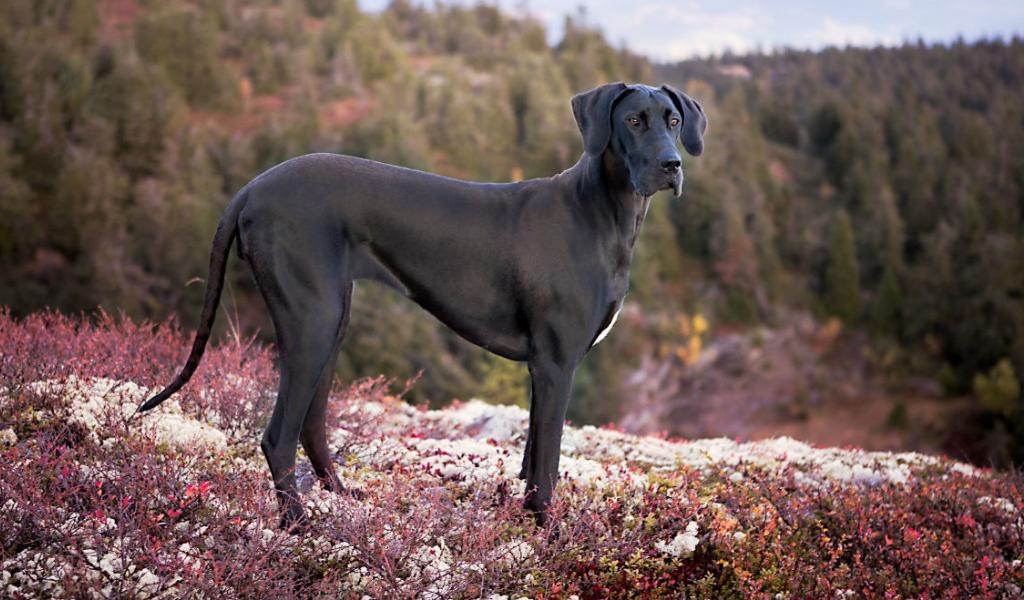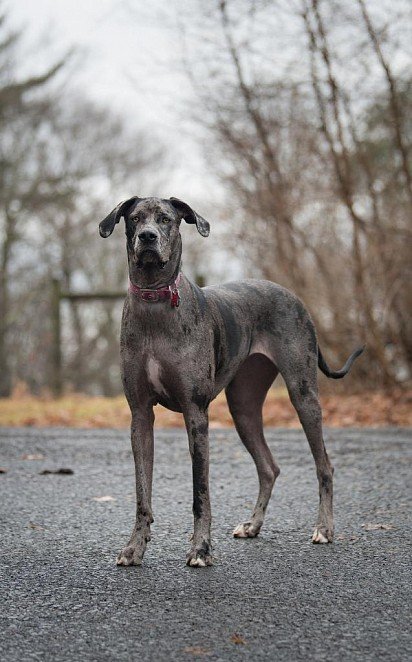The Great Dane at first meeting seems a formidable and even dangerous dog, thanks to its outstanding physical characteristics. However, behind the appearance of a stern giant, in fact, lies a calm and incredibly loyal to the family kind-hearted man. He is not prone to aggression unless the actions of an outsider provoke the dog to protect the life of the owners or his own.
#1 Today scientists distinguish a whole group of large breeds, united by the name “mastiff-like dogs”.

In addition to the dogs themselves, it includes mastiffs, bulldogs, St. Bernards, Dalmatians, Rottweilers, Newfoundlands, Leonberger. It is believed that they all descended from one ancestor - the Tibetan mastiff. This breed is considered one of the oldest service breed, the first documentary evidence of its existence dates back to the XII century BC. Huge strong dogs have been used for centuries to protect mountain monasteries, hunt large predators, and protect the herds of nomads. Over time, the breed has spread throughout the region. Tibetan dogs were very popular in India, Persia, and other Asian countries. There they began to be used as a military "weapon" on the battlefields, which significantly increased the value of animals. According to Persian law, killing such a dog was an even more serious crime than inflicting death on a person, which was reflected in the amount of the fine imposed on the culprit.
#2 Archaeological finds indicate that the Tibetan Great Danes took part in numerous campaigns of King Xerxes, including the suppression of the uprisings in Egypt and Babylon and the protracted Greek campaign.

It is possible that the winners received not only weapons and gold but also warlike dogs as trophies. Images of Great Danes are found on the coins of Ancient Greece, and in Corinth, they even erected a monument for their services in the battles with the Peloponnese. Aristotle in his writings paid tribute to the incredible power and natural strength of war dogs.
#3 It is not surprising that his pupil and one of the greatest commanders of world history, Alexander the Great, became an ardent admirer of molossians (this is how they called furry people from Tibet in Europe). The mighty dogs also took a liking to the Romans.

In peacetime, Great Danes were "kept in shape", forcing them to fight in the ring along with the most dangerous wild animals; during campaigns, they invariably accompanied the troops. Together with legionnaires and traders, the animals landed on the British Isles and ended up on the territory of modern Germany, France, and Scandinavia.

